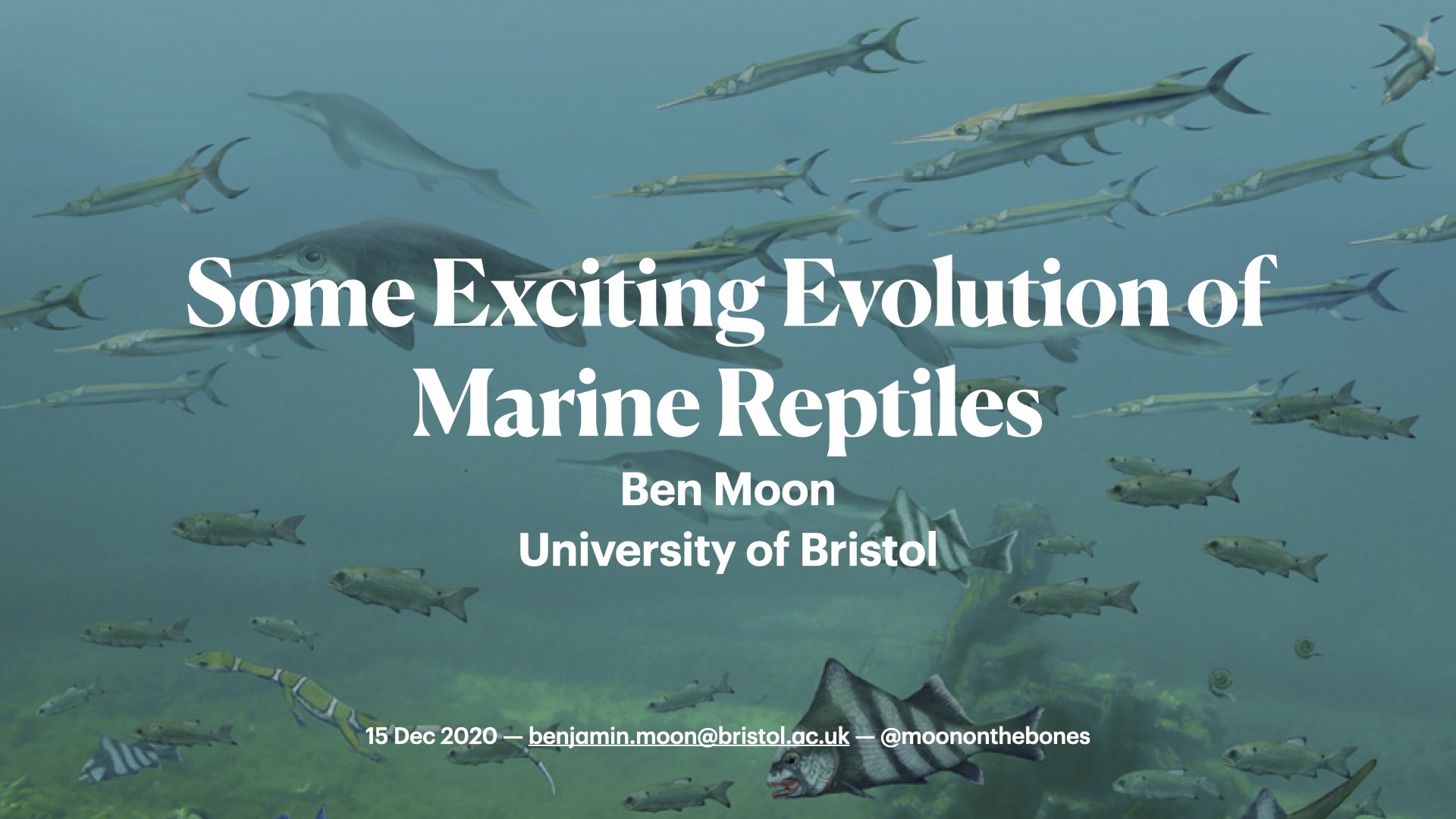Some Exciting Evolution of Marine Reptiles
The joy of a lockdown and online working is being able to invite and speak around the world in places you otherwise might not be able to get to. Sure you miss out on the visiting bit, seeing collections, exploring the town, but you still can see and talk to other people from across the world whose research overlaps. This talk was presented at a discussion group of the University of Bonn palaeobiology group, alongside another talk by Alexandra Houssaye, by invite from René Dederichs for a session entailed ‘Two Persons I Quoted in my Bachelor Thesis.’

Here I spoke about measuring diversity trends in ichthyosaurs, other marine tetrapods, and interesting points of their evolution at three different levels:
- Raw taxonomic diversity: both from currently assigned and valid species, as well as potentially increasing this with new discoveries of material worldwide, and reassessment of substantial material currently available from poorly studied periods. We had good discussion afterwards about the potential diversity in the Rhaetian and what this means for a sudden end-Triassic extinction or a longer Late Triassic turnover.
- Morphological diversity: using geometric, cladistic, and functional traits to characterise and explore changes through ichthyosaur evolution, including issues of completeness and how this can affect the quality of results. I also included some of the use of fluid dynamics for investigating whole-body morphology.
- Ecological diversity: including work that came out last year showing how ichthyosaurs were an important component of marine ecosystems throughout the Mesozoic, but were only one among many different niches marine tetrapods occupied.
